I visited several taverns on the stagecoach road that runs from Camden to Little Egg Harbor, but you can’t get a drink at any of them, unless you want tea-stained cedar water or stagnant mud puddles.
Before the railroad killed the stagecoach star, the fastest way from Philly to the relaxation of the Jersey Shore—assuming it was not beset by the colonial version of Snooki and the Situation1—was a rollicking, bumpy all-night ride by coach along a jouncy tavern-spangled road from the Camden Ferry through the heart of the Pine Barrens. Today, you can follow the same path in a well-apportioned wagon like the Subaru Outback Wilderness or an off-road vehicle like a raised Jeep. If you’ve followed my previous attempt at reenacting this path on my Subaru steed shod with All Terrain shoes, you’ll know I was stopped by deep washouts after the once-treacherous passage at Quaker Bridge, and never made it to the lost town of Mount.
Reader, I have seen Mount.
Last weekend was a sweet spot between a torrential rainstorm that washed out roads in the Pines and a dry spell that would raise the fire warning. The perfect time to drive the back roads when the water would be half evaporated, but the understory wouldn’t be baked into kindling. So I hit the road and drove straight to the former site of Washington, a town in the Pine Barrens that was once a bustling burg with a tavern run by the Sooy family. This is all that remains on the site, a cellar hole and some brick walls said to be ruins of a pit silo and barn:
The Washington Tavern was a site for mustering troops, though after the Revolution, “mustering” was an excuse to get drunk in uniform. Later, it became a euphemism for women who couldn’t come to work because they had to deal with a pregnancy, or were “knocked up,” at least according to the journal of the Martha furnace paymaster.2 I love learning that our visions of a past where people were somehow different—or worse, “better” than we are today—are utterly shattered, and everyone is just as vulgar and human as everyone today.
Some people who aren’t vulgar are Pineys on the back roads. I’ve never failed to get a wave from someone passing me or when I wave as I pass them. And remember back when I got “lost” trying to get to Mount, and the dirt bikers pointed me to Batsto? Nice people. I got a wave as I was exploring this ruin, from two raised Jeeps who probably thought they’d be pulling me out of the sugar sand. But the Squatcharu made this journey with barely a spinning tire.
The road to Mount from Washington Turnpike had a few washouts, but I measured them with a hiking pole and they were shallow and had a hardpack bottom, so I rolled on through, careful not to splash too much. All the car needed was some polish for branch scratches—these trails are too narrow for a full size truck—and a car wash to get the stanky mud off the undercarriage. Mount is a bit of a big nothing; a crossroads in the middle of nowhere with no cell signal, just a cellar hole and a deadly surprise awaiting the careless:
A bricked up well that someone has thankfully stuck a log into, or I would have stumbled right into it. And I knew it was on the grounds somewhere, thanks to Barbara Solem-Stull’s Ghost Towns and Other Quirky Places of the Pine Barrens. It’s a great resource for finding these places, but I’ve yet to find anything “quirky.” Not even the remains of an old moonshine operation. The summer growth has overrun things with creepers and wildflowers, which makes it a wonderfully fragrant place, but difficult to find hidden ruins. For example, on top of Apple Pie Hill are the ruins of a Sanatorium and Mineral water bottling plant that I missed completely; I’ll be back in the autumn to go looking.
What was hard to miss was the Washington Tavern ruins of the pit silo. I met a black-chinned hummingbird there, too fast to photograph. The road from there to the highway was sandy but easy driving. The coach road dead-ends at a swamp after that, so I took the highway to Bodine campground, named after the tavern keeper who kept house on the Wading River. It’s a peaceful spot not far from the awesome ruins of the Harrisville Paper Mill. All that remains of the Bodine Tavern that sat on the river next to a bridge is a tree that ate one of the tavern stones, and a few pilings from the river crossing:
The Wading River is typical for the cedar water creeks of the Pines, tea-stained, but otherwise crystal waters rippling over iron-flecked sands. You can hear the natural peace, if you prefer.
The bridge was closer to the tavern in a swampy, less picturesque section. After Bodine, there were other taverns on the road to Tuckerton, but it’s mostly populated highway from here on. The stage road was so busy that there was a north and south fork from Washington to Shamong; I doubled back, but I learned my lesson and didn’t follow the branch from Mount. I cheated and joined up at High Crossing, which is near the Emilio Carranza Memorial. I stopped by there on Memorial Day. The tavern at High Crossing was replaced by a rail station, and that’s also gone, leaving a lonely sandy crossroads in the middle of nowhere. But the rail line remains, which I followed by an unnammed dirt bike path that required me to flip in the folding mirrors. It’s a fun ride that I will be following again; no washouts, just lumpy sand rises and gullies. The rail bed is sometimes ten feet below the road in a valley and other times built up on a rise. It would be a nice, if long hike:
The original Indian King tavern stood in Atsion, of which nothing remains; another tavern in Flyatt was called the Half Moon and Seven Stars, which despite the lovely name, is just a historical marker and a stand of trees now; and another marked “Oriental,” which may have been the name of the tavern, marked by an aged tree:
One of the few from this era that are still standing is the Cedar Bridge tavern, not open for business, but I’ll be visiting for a photo soon. One you can get a drink at is the Barnsboro Inn, once known as the Spread Eagle, which has been serving travelers since at least 1776. I’ve been meanming to stop in for a burger and a beer. I nearly headed to the Piney biker joint the Lower Bank Tavern for a beer before heading back. That’ll have to wait for another day.
I also have a 3 minute video of my entire drive from Flyatt to Hampton Gate, if you’re into that sort of thing. It’s a rough road that I won’t take again—not much to see, but it was fun for “softroading” the Subaru, as mild off-roading is called. I also followed Tuckerton Road all the way back to Marlton, through tony suburbs like Medford, which was the only place I’ve seen a “Fuck Biden” sign. (Stay classy, Trumpers. I kind of respect that more than the “Let’s Go Brandon” ones. I didn’t see any of those or other pro-Trump signs today, which was nice. They’re always in the trashy suburbs where rich people cosplay as blue collar with a $70,000 King Ranch).
Another resource I’ve been using is the Historical Marker Database, which catalogs all those signs you see next to an empty lot—or if you’re lucky, an undemolished building—across the United States. It’s helpful for scouting out places to visit, and often you know ahead of time if it’s a cellar hole, a disused horse trough, or grove of trees where a beautiful building once stood. But that’s part of the fun about looking for these old places. Sometimes you find a sandy crossroads, sometimes you find a creepy, towering furnace like at Atsion.
Next time, I’ll write about two taverns that you can visit, even if they won’t serve you a refreshing spiced ale or a hearty syllabub: the Gabriel Davies and the Indian King.
ſnooki and the ſituation?
Juicy details from the invaluable Ghost Towns and Other Quirky Places in the Pine Barrens, by Barbara Solem-Stull.




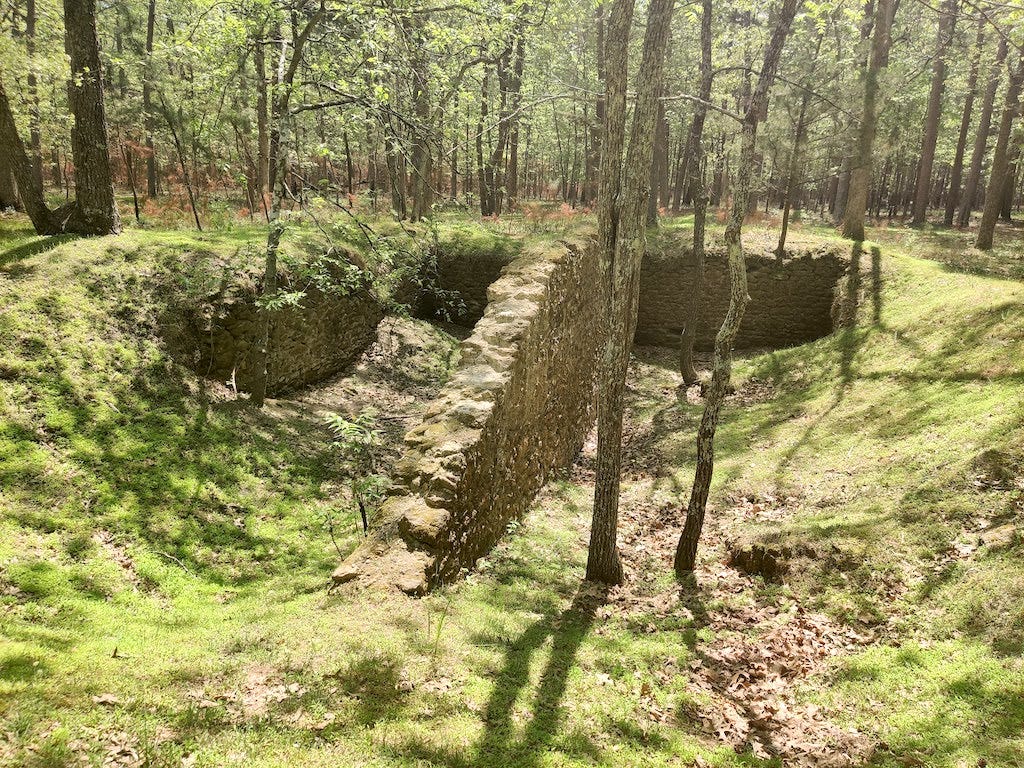
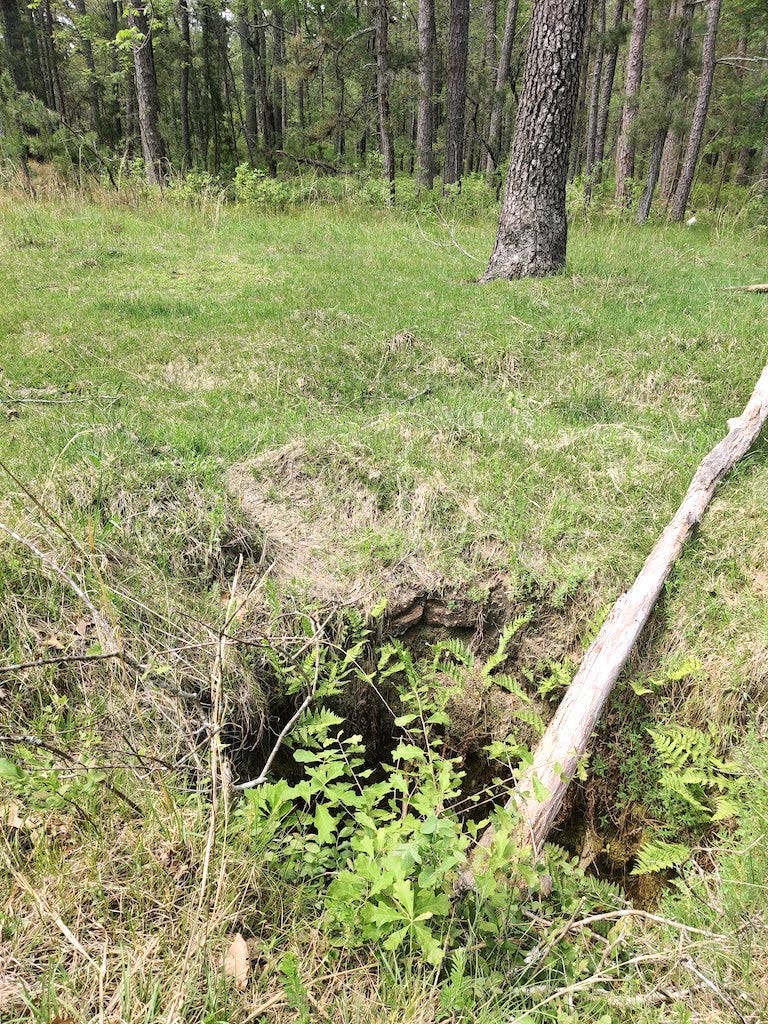
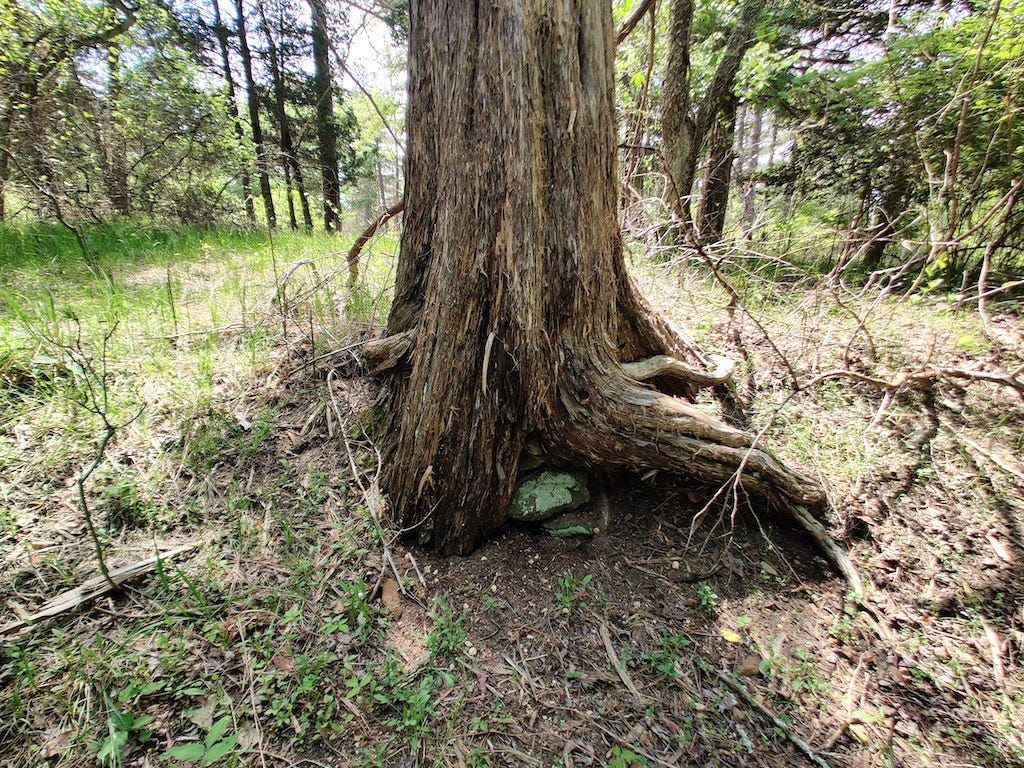


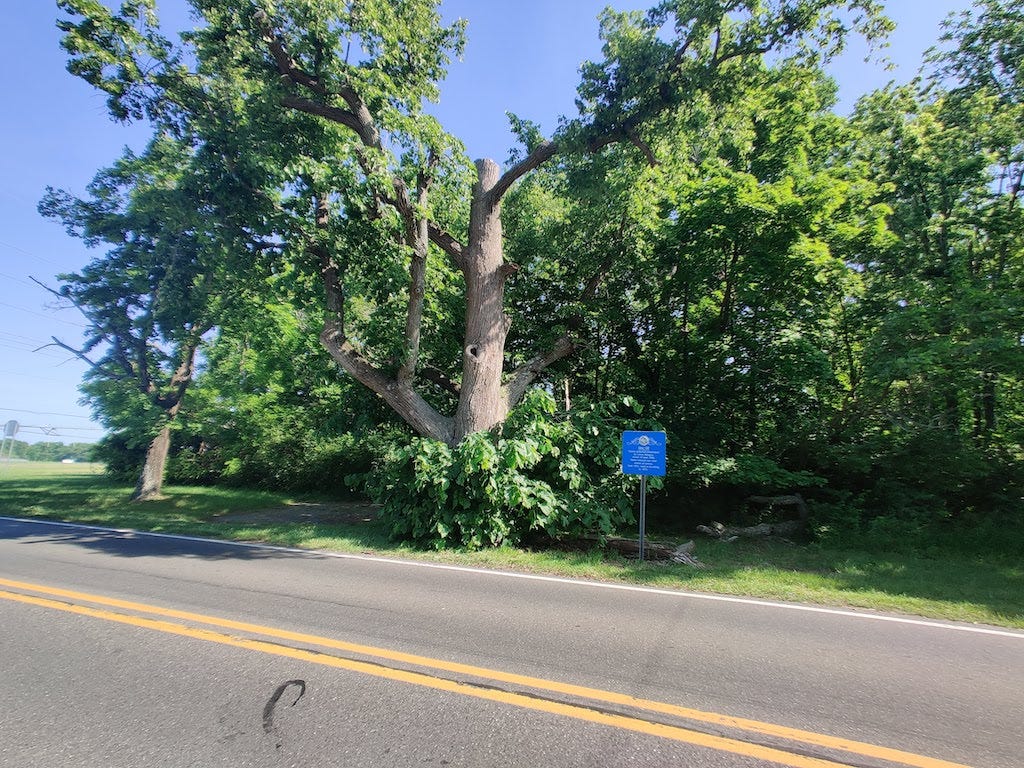
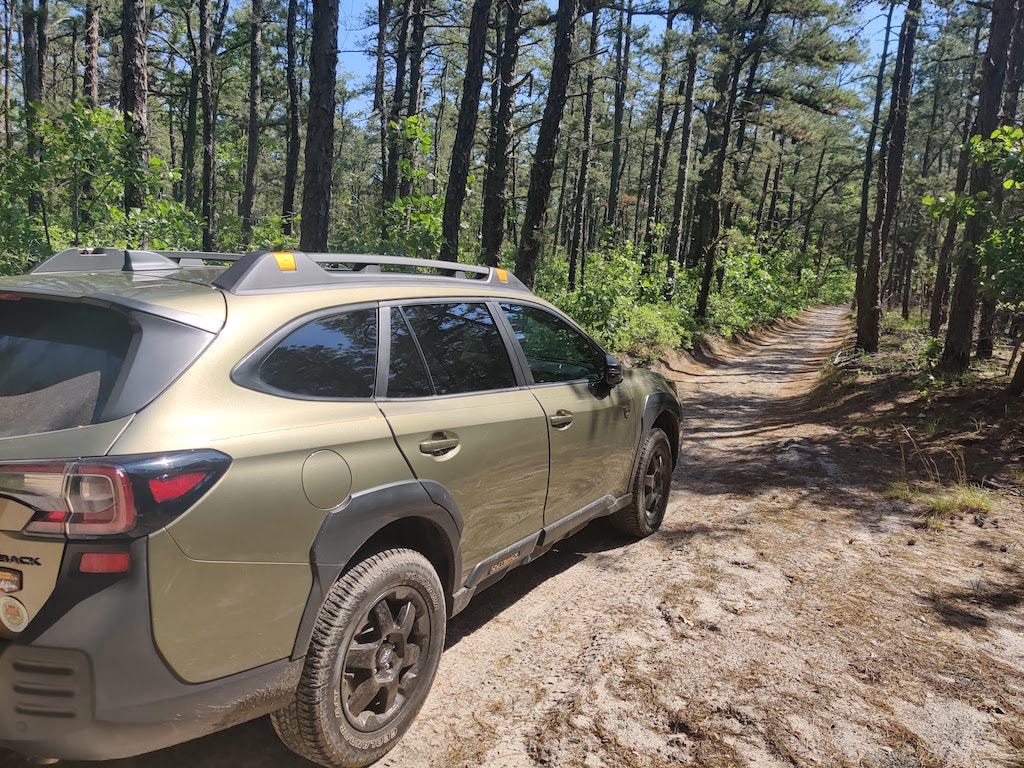
Excellent, as always. A friend who is something of a history nerd like me has me calling our historical marker signs "brown boards" because they are always, well, brown. They are of a universal design for the most part here in Montana, but I suspect they are different depending on where you are. And they are usually only partially right as it relates to the local history; some better than others, of course. I like to read them equally to learn and also to rant about what they leave out, which is almost exclusively related to Indigenous presence.
“I love learning that our visions of a past where people were somehow different—or worse, “better” than we are today—are utterly shattered, and everyone is just as vulgar and human as everyone today.” -- Yes, this exactly.
I’m a huge fan of Agatha Christie (despite some problems with her) because I feel like this is basically her thesis. People are always people. (And the difference between a murderer & a non-murderer is often a lot smaller than you might expect.) Anyway, I just love all this kind of thing, the tearing down of some fabricated universe in which for some reason our ancestors were simpler, less complicated, and had fewer selfish motives than anyone you’ve ever actually known.
Oh, speaking of which, I kind of stumbled across the Blue Blazes Still Trail in Maryland last October -- it’s a neat place to visit if you’re ever in the area and/or would like to see the ruins of a still that was raided during prohibition. https://www.nationalparkstraveler.org/2010/09/marylands-catoctin-mountain-park-whiskey-still-gets-you-close-and-personal-moonshine-history6890
I can’t wait to read about the ghost taverns.
(Also, ſnooki and the ſituation? OMG. ❤️)